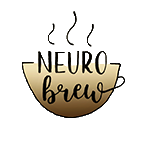Making and Breaking Habits Using Neuroplasticity
Most of us are so entrenched in our habits that it feels impossible to ever change them, even if those habits negatively affect our lives.
Thanks to modern neuroscience, we know that our brains don’t “solidify” at a certain age, and we can modify our circuitry (to an extent) at any time. On the flip side of that coin, though, we all know that it’s really easy to form bad habits. So how exactly do our brains fall prey to bad habits so easily, and how can we change them for the better?
Let’s go back to our analogy. Remember the jungle from the previous post on neuroplasticity? Well let’s say you’re forging a new path, and this time it’s the forming of a bad habit. You’re walking along this path and come across a patch of poison ivy. However, next to the poison ivy is a bush full of sweet berries. While the berries are great, the poison ivy scratches up your skin and leaves itchy welts all over your body. Your brain will obviously choose to walk through another part of the jungle next time, right?
Nope. Your brain will want to go back to that path time and time again.
Contrary to what you might think, your brain isn’t all that concerned about what’s best for you. The primary function of your brain is to ensure your survival. Remember: our brains have evolved over millions of years, and we still have the same animal instincts as our cavemen ancestors and even reptiles. So no, your brain doesn’t care if you watch that entire new season of your favorite show on Netflix in two days or spend a little too much money shopping on Etsy. The wiser part of you might want better for yourself, but your brain is strongly wired to crave a reward.
Repeated behaviors create fast and efficient circuitry, which can supersede what’s healthiest for you. Every time you reinforce that behavior, it only gets stronger. Another thing your brain cares more about than your general well-being is dopamine. You know, the satisfaction you get from a sip of ice-cold McDonald’s sprite. Your brain releases a warm bath of dopamine molecules, and that’s what gives you that happy feeling. Dopamine is a neurotransmitter involved in pleasure and motivation, and your brain is constantly craving it – even when the behavior or substance causing that dopamine rush isn’t good for you.
Luckily, neuroplasticity offers the possibility of escaping bad habits and forming more salubrious ones.
One of the best ways to break a bad habit is to replace it with a good one. It’s possible to just tackle the bad habit alone – once you stop reinforcing the behavior, its neural circuitry will weaken. But it’s even more helpful to supplant it with a positive behavior, especially when your brain has the urge to return to that familiar place.
This is the part that requires conscious effort: you must forge a new path in your brain. It will be foreign at first and much more difficult since healthy habits don’t usually offer a strong and immediate reward afterward. This new pathway is undeveloped, and you can barely see through to the other side of the jungle because there is still overgrown grass and branches in the way. But every time you repeat this behavior, you’re making the path that much more prominent and recognizable. The more recognizable it is, the more likely you will take it over another path, and the faster you will get through to the other side.
And every time you replace a bad habit with a healthier one, that old pathway gets weaker due to lack of activation. The grass is growing back on the bad habit path and branches are falling in the way; you’re less likely to want to walk through it. Eventually, the positive pathway takes the lead and becomes more efficient. The connection between the neurons associated with this circuit become strong and more automatic. When challenged, you’re more inclined to take this pathway instead of the old, worn down one.
The weakening of the unused pathway is a brilliant compensation technique designed to achieve optimal efficiency. This way, the brain has to do less work and thus use less energy when it comes time to decide which neural pathway to use in a given moment. It’s all about optimization. Whichever circuit is stronger, or has been activated the most times, will likely be used. And thanks to this, we aren’t permanently stuck with bad habits.
Brain hack: there’s a way to dupe your brain into making this process easier. For instance, if you want to spend more time studying and less time scrolling on your phone, you can reward yourself with a small treat after maintaining focus for a certain period of time, such as with a small piece of chocolate or ten minutes of phone time. This way, you’re still getting that slight kick of dopamine to serve as a motivator without overdoing it to the point where you lose all focus on your current goal.
With all that being said, habits are merely plants. Water one and it will grow, stop watering another and it will wither away. Sadly, there’s no fast-pass or magic cure. Old habits do die hard, but your brain will follow the commands eventually – it just requires consistency. Most things are okay in moderation, of course, but perhaps try to watch season three of Outer Banks over the span of seven days instead of two this time. Yes, that was directed towards myself, but if the shoe fits…

Upbeat and well written, Julie! Thanks for the effort you are putting into this new venture.